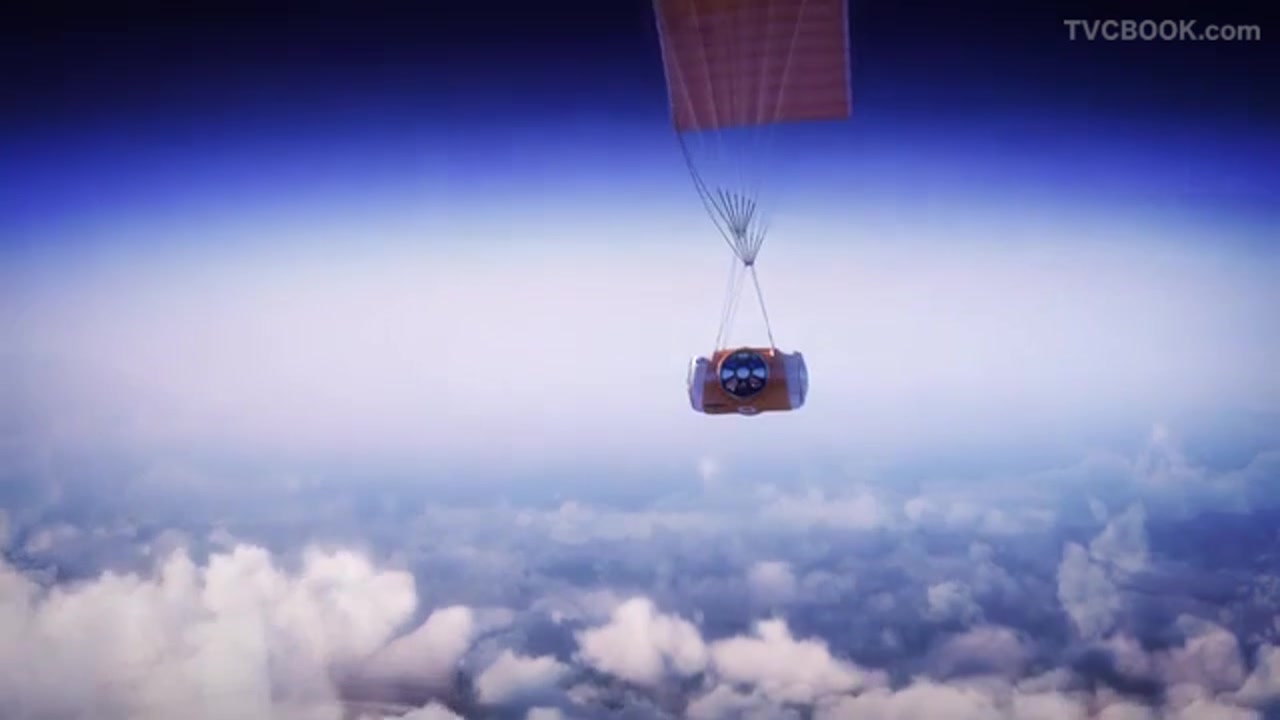See more architecture and design movies at dezeen.com/movies
A capsule that will float passengers to the edge of space and offer views of the Earth's curvature has been designed by British studio Priestmangood.
Developed for the World View programme set up by US space development corporation Paragon, Priestmangoode's lightweight pressurised vessel will be lifted by a helium balloon to take six passengers and two crew members to the periphery of the atmosphere.
"When you think about going near the edge of space," Priestmangoode director Nigel Goode told Dezeen, "you think of some sort of Star Wars-type craft, something which has direction and speed but obviously this is very, very different. It would look very odd to have a craft stuck at the bottom of a balloon so the shape was really designed for strength and for maximum visibility for the people on board."
The journey to the edge of space will take around an hour and a half, then the vehicle will spend from two to six hours at the 30-kilometre altitude so passengers can take in the views of the Earth below, the curve of its surface and the blackness of space beyond.
The World View concept aims to create a luxury voyage instead of a thrill ride. Space suits won't be needed in the pressurised cabin, which will provide a breathable atmosphere.
"You can travel up there, spend a bit of time in the capsule moving around at that altitude and be able to enjoy the leisurely experience," said Goode.
Large circular windows on each of the four sides are divided into segments to reduce the pressure on the surfaces. A small transparent dome will also allow views out into space above.
Attached to the pod by suspension cables, the polyethylene helium balloon used for propulsion will expand as the helium density decreases while it rises to its target altitude.
A steerable parafoil will control the 20 to 40-minute descent before the capsule lands intact on the ground using deployable landing gear.
The vertical take-off greatly decreases the amount of infrastructure needed to launch, compared to the Virgin Galactic craft that take-off using a runway, and the vehicle can be transported on a specially designed trailer that doubles as a platform for liftoff.
This means that capsules could depart from any location around the world that has clear, dry weather, and the initial flights will leave. "I think it will open up space travel for an awful lot of people," said Goode.
A World View trip is estimated to cost $75,000 (£47,000) per person, less than a third of Virgin Galactic's $250,000 (£156,000) price tag.
Goode told us that project is not just for tourism, but can also be used for scientific research: "There are lots of opportunities on the craft to conduct experiments. We've got measuring equipment and things like that so other scientific research can be done as well."
The next step is to design the interior, which Goode envisages to be arranged so two people will face each window.
After testing and approval, the first flights are planned to take place in three years time.
Goode also told us that his company has been working with Paragon on a vessel to send a two-person crew on a 501-day flight around Mars and back.

在T站说说你的看法~